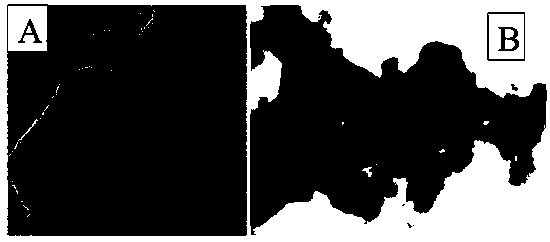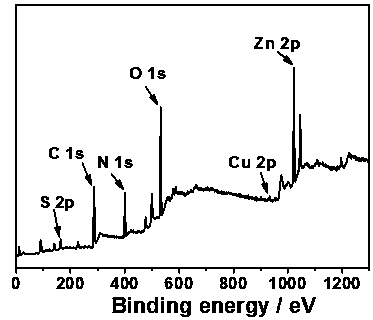Method for detection freshness of aquatic products via fluorescence of adenosine triphosphate (ATP)
A technology for fluorescence detection and aquatic products, applied in fluorescence/phosphorescence, material excitation analysis, etc., can solve the problems of complicated instrument operation and high price, and achieve the effects of good selectivity, wide detection range and high sensitivity
- Summary
- Abstract
- Description
- Claims
- Application Information
AI Technical Summary
Problems solved by technology
Method used
Image
Examples
Embodiment 1
[0032] A method for detecting the freshness of aquatic products by fluorescence of adenosine triphosphate, the steps comprising:
[0033] (1) Sample pretreatment: Clean fresh fish and shrimp aquatic products (pomfret, climbing shrimp, freshwater shrimp) and remove the shell. Take 2 g of the flesh of aquatic products in a 50 mL centrifuge tube, add 20 mL of pre-cooled perchloric acid solution (10%), use a glass rod to break up the large pieces of meat in advance, and then put them into an ultrasonic tube under ice bath conditions. Cleavage and extraction in a cell disruptor for 5 min, and then rapidly centrifuged at 8000 rpm for 5 min; the obtained supernatant was adjusted to pH 7.4 with 10 M KOH solution, adjusted to 50 mL with Tris-HCl buffer, and then centrifuged at 8000 rpm. Centrifuge for 5 min, and filter the supernatant obtained here with a 0.45 μm filter membrane for later use.
[0034] (2) Take 1 mL of metal-organic framework / copper nanocluster (CuNCs / ZIF-90) aqueous ...
PUM
 Login to View More
Login to View More Abstract
Description
Claims
Application Information
 Login to View More
Login to View More - R&D
- Intellectual Property
- Life Sciences
- Materials
- Tech Scout
- Unparalleled Data Quality
- Higher Quality Content
- 60% Fewer Hallucinations
Browse by: Latest US Patents, China's latest patents, Technical Efficacy Thesaurus, Application Domain, Technology Topic, Popular Technical Reports.
© 2025 PatSnap. All rights reserved.Legal|Privacy policy|Modern Slavery Act Transparency Statement|Sitemap|About US| Contact US: help@patsnap.com



